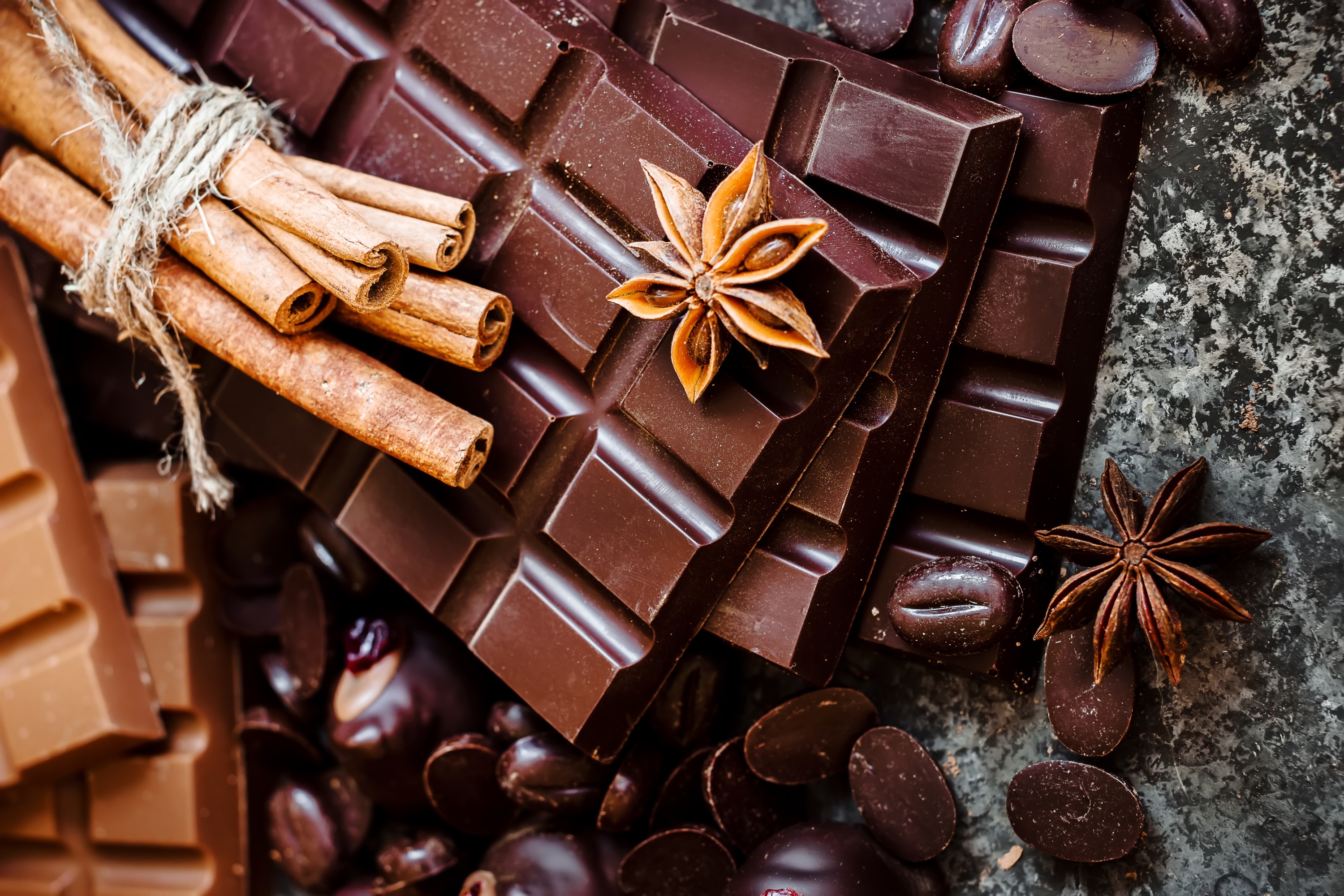Chocolate and its history

The history of chocolate began in Mesoamerica. Fermented beverages made from chocolate date back to at least 1900 BC to 1500 BC. The Mexica believed that cacao seeds were the gift of Quetzalcoatl, the god of wisdom, and the seeds once had so much value that they were used as a form of currency. Originally prepared only as a drink, chocolate was served as a bitter liquid, mixed with spices or corn puree. It was believed to be an aphrodisiac and to give the drinker strength. Today, such drinks are also known as "Chilate" and are made by locals in the south of Mexico and the north triangle of Central America (El Salvador, Guatemala and Honduras). After its arrival to Europe in the sixteenth century, sugar was added to it and it became popular throughout society, first among the ruling classes and then among the common people. In the 20th century, chocolate was considered essential in the rations of United States soldiers during war.
The word "chocolate" comes from the Classical Nahuatl word xocolātl, of uncertain etymology, and entered the English language via the Spanish language.
Cultivation, consumption, and cultural use of cacao were extensive in Mesoamerica where the cacao tree is native. When pollinated, the seed of the cacao tree eventually forms a kind of sheath, or ear, averaging 20" long, hanging from the tree trunk itself. Within the sheath are 30 to 40 brownish-red almond-shaped beans embedded in a sweet viscous pulp. While the beans themselves are bitter due to the alkaloids within them, the sweet pulp may have been the first element consumed by humans.
Cacao pods grow in a wide range of colors, from pale yellow to bright green, all the way to dark purple or crimson. The skin can also vary greatly - some are sculpted with craters or warts, while others are completely smooth. This wide range in type of pods is unique to cacaos in that their color and texture does not necessarily determine the ripeness or taste of the beans inside.
Evidence suggests that it may have been fermented and served as an alcoholic beverage as early as 1400 BC.
Cultivation of the cacao was not an easy process. Part of this was because cacao trees in their natural environment grow to 60 feet tall or more. When the trees were grown on a plantation, however, they grew to around 20 feet tall.
While researchers do not agree on which Mesoamerican culture first domesticated the cacao tree, the use of the fermented bean in a drink seems to have arisen in North America (Mesoamerica—Central America and Mexico). Scientists have been able to confirm its presence in vessels throughout the region by evaluating the "chemical footprint" detectable in the micro samples of contents that remain. Ceramic vessels with residues from the preparation of chocolate beverages have been found at archaeological sites dating back to the Early Formative (1900–900 BC) period. For example, one such vessel found at an Olmec archaeological site on the Gulf Coast of Veracruz, Mexico dates chocolate's preparation by pre-Olmec peoples as early as 1750 BC. On the Pacific coast of Chiapas, Mexico, a Mokayanan archaeological site provides evidence of cacao beverages dating even earlier, to 1900 BC.
A study, published online in Nature Ecology and Evolution, suggests that cacao—the plant from which chocolate is made—was domesticated, or grown by people for food, around 1,500 years earlier than previously thought. In addition, the researchers found cacao was originally domesticated in South America, rather than in Central America. “This new study shows us that people in the upper reaches of the Amazon basin, extending up into the foothills of the Andes in southeastern Ecuador, where harvesting and consuming cacao that appears to be a close relative of the type of cacao later used in Mexico—and they were doing this 1,500 years earlier,” said Michael Blake, study co-author and professor in the University of British Columbia department of anthropology. The researchers used three lines of evidence to show that the Mayo-Chinchipe culture used cacao between 5,300 and 2,100 years ago: the presence of starch grains specific to the cacao tree inside ceramic vessels and broken pieces of pottery; residues of theobromine, a bitter alkaloid found in the cacao tree but not its wild relatives; and fragments of ancient DNA with sequences unique to the cacao tree.
Pueblo people, who lived in an area now the U.S. Southwest, imported cacao from Mesoamerican cultures in southern Mexico between 900 and 1400. They used it as a common beverage consumed by many people within their society.
- Arts
- Business
- Computers
- Spellen
- Health
- Home
- Kids and Teens
- Money
- News
- Recreation
- Reference
- Regional
- Science
- Shopping
- Society
- Sports
- Бизнес
- Деньги
- Дом
- Досуг
- Здоровье
- Игры
- Искусство
- Источники информации
- Компьютеры
- Наука
- Новости и СМИ
- Общество
- Покупки
- Спорт
- Страны и регионы
- World


